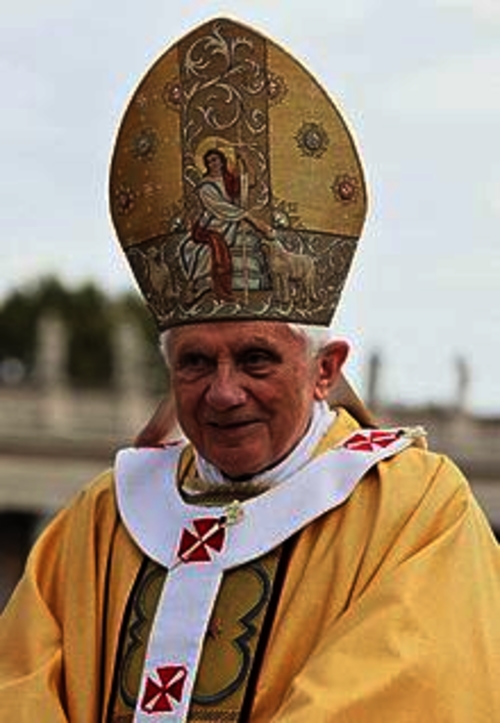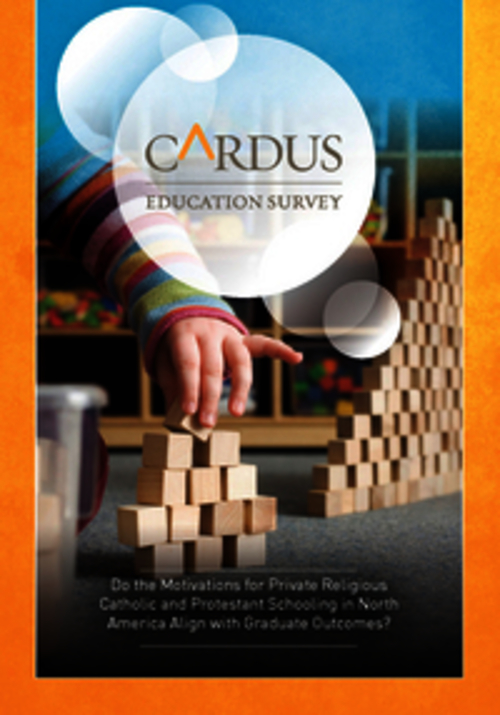The newest downtown office building now rises above all others, the crescent-shaped building called The Bow. When completed next year, civic leaders intend it to be more than a symbol of Calgary's economic power. The hope is that it will lead a revitalization of the east side of downtown, where a new office tower hasn't gone up for 25 years. The Bow will be a Calgary landmark to be sure, but what kind of downtown will it preside over? What constitutes downtown development was the subject of an innovative report released here last week by Cardus, a think-tank that seeks to bring the Christian tradition to bear on our social architecture, as they put it. (Though I am a senior fellow at Cardus, I was not involved in this project, except to promote its launch.) The "Calgary City Soul" project asks a simple question: Are places of worship important in downtown development? Visions for downtown usually include office towers, high-end retail, residential buildings and space for parks and culture - libraries, museums, opera houses, theatres and art galleries. In recent years, for both commuting and environmental reasons, a desire has emerged to increase downtown density, so greater attention is now paid to how more people might live downtown. Where will the schools be? Will there be markets in walking distance? A few years back the City of Calgary updated its City Centre Plan, laying out what would be needed over the next decades if Calgary were to add as many as 70,000 people to the city core. It was the type of comprehensive planning document that is massively influential - and rather dull. But the folks at Cardus read such stuff and noticed that places of worship were totally ignored in the planning process - not even mentioned, except as a heritage conservation issue. Perhaps it was thought that none of the new downtown residents would be churchgoers. Or more likely, that whatever the churches had to offer would not contribute to downtown development. The Calgary City Soul project (Cardus.ca) argues that such an oversight was a critical failure. "Beliefs may be private or personal matters, but the institutions that nurture them have long been and remain public and part of, not apart from, the secular society represented by governments," the report argues. "Faith institutions have long played a critical role in the social fabric of vital cities. The effectiveness and efficiency of these institution's social services often surpasses what can be delivered by govern-ment agencies, owing in part to the very localized and socially embedded nature of the service delivery represented by faith institutions." Without the churches downtown, who will look after the suffering on the streets? The same day the Cardus report was released, Mayor Naheed Nenshi was at a morning faith breakfast, speaking about the critical role of religious institutions in the city's homelessness project. The data gathered by the report make it clear that faith-based institutions of social service are critical in Calgary, as they are in many other cities. Often it is the church shelters and programs which are the last resort in an emergency. So it makes good civic sense to plan creatively for churches, synagogues, temples and mosques downtown. Megaprojects like The Bow will bring a lot of new investment downtown, but precisely these new office, retail and residential projects - most of them highend - drive up the cost of being downtown. Churches are not great revenue generators, especially downtown where populations are transient and the physical plant is likely old and expensive to maintain. Without a vision that makes room for religious congregations downtown, the forces of "renewal" will slowly squeeze them out. Good social policy attempts to keep them in. Yet it is more than just good social policy. Religion downtown is not just about caring for the bodies of those who are on the streets. It is about the soul of the city. A city that has no room in its heart for the things of God is simply a less human city. Busy and productive it may be, but lacking an essential purpose and a deeper meaning for all the work. The grandest street in the world, Fifth Avenue in New York, features the noblest of human culture - the New York Public Library - and the rather crass Trump Tower - within a few blocks of each other. But were it not for St. Patrick's Cathedral between them, the whole street would be impoverished. The skyscrapers are not the only things that should point the human spirit toward the heights.

Finding a place for God in the city
October 20, 2011

Jonathan Chaplin publishes, Multiculturalism: A Christian Retrieval
Recent years have seen an astonishingly rapid volte face regarding multiculturalism in Britain. Once political orthodoxy, it is now almost a by-word for segregation, exclusion and security threats. In this report, Jonathan Chaplin argues that in our haste to reassess multiculturalism in the light of evidence of its darker sides, we must not lose sight of its indispensable contribution to realising a just society. Tracing the history of multiculturalism and clarifying precisely what is at stake in the debate, Chaplin offers a vision of "multicultural justice", drawn from the resources of Christian social thought, but accessible and persuasive to those outside of the Christian faith. To read this report in full, click here.
October 20, 2011

Shooting Up on Power
The Harper government is spending $28 million to have middle-aged jumbotron-sized gentlemen dress up as soldiers and re-enact the War of 1812. Meanwhile, Canada’s Parliament, 2011, has just suffered an assault by the provinces and the Supreme Court that, unless beaten back, overturns the constitutional order of Confederation. On September 30, Canada’s highest court handed down its decision in the Insite case. The judgment ostensibly involved a so-called safe injection site in Vancouver where addicts can shoot up street drugs such as heroin. The federal government had ordered a review of the experimental facility and was leaning toward closing it down. Read the rest of the article here.
October 19, 2011

Private Non-Religious Schools
To read the full article, click here .
October 17, 2011

Construction associations call for infrastructure focus from Ontario Liberals
Daily Commercial news on the Cardus report calling for an end to the Ontario College of Trades. Quote: "Renkema hopes the Liberals will give some attention to the reports that have been conducted on the College of Trades, like the Cardus report entitled “College of Trades: An impossible institutionâ€, which has many construction employers calling for the abolition or complete overhaul of the institution." Read the whole article here.
October 17, 2011

Parental leverage in our Catholic schools is but a dream
August 24, 2011

Christian Post covers Cardus education survey
A new study of K-12 Christian schools shows that Protestant Christian schools do a better job of developing their students' spiritual formation while Catholic Christian schools do a better job developing their students' intellect. Read the news coverage here.
August 22, 2011

Protestant Schools Focus on Faith; Catholic Schools Focus on Intellect
August 21, 2011

Cardus Releases Largest Ever Study About Christian Education in North America
August 19, 2011
Media Contact
Daniel Proussalidis
Director of Communications
